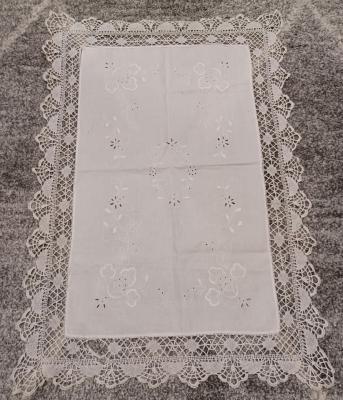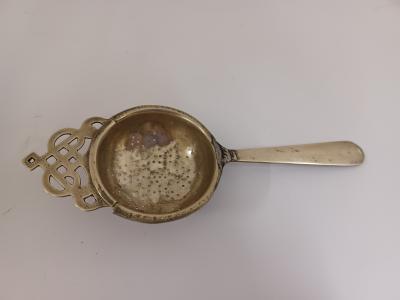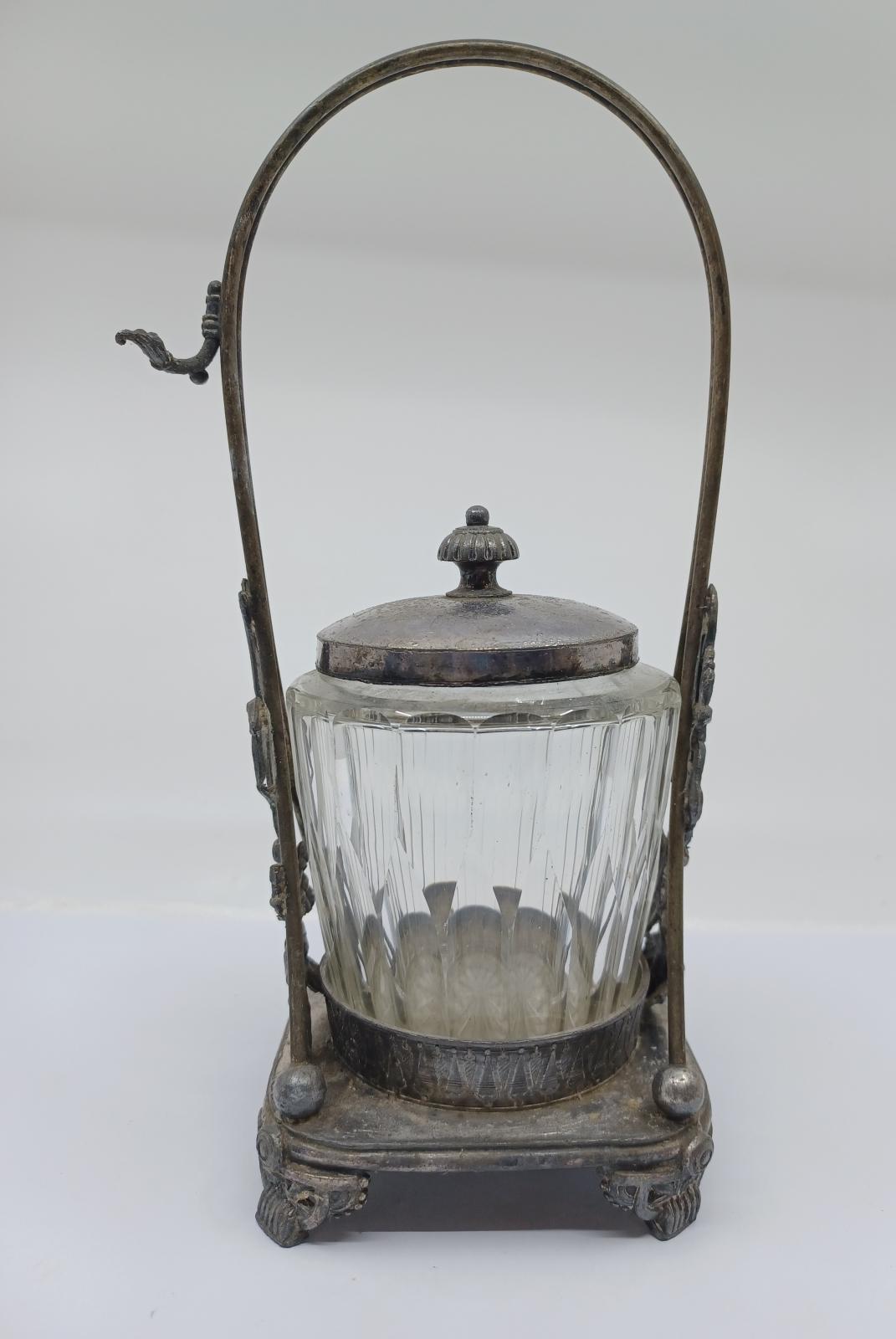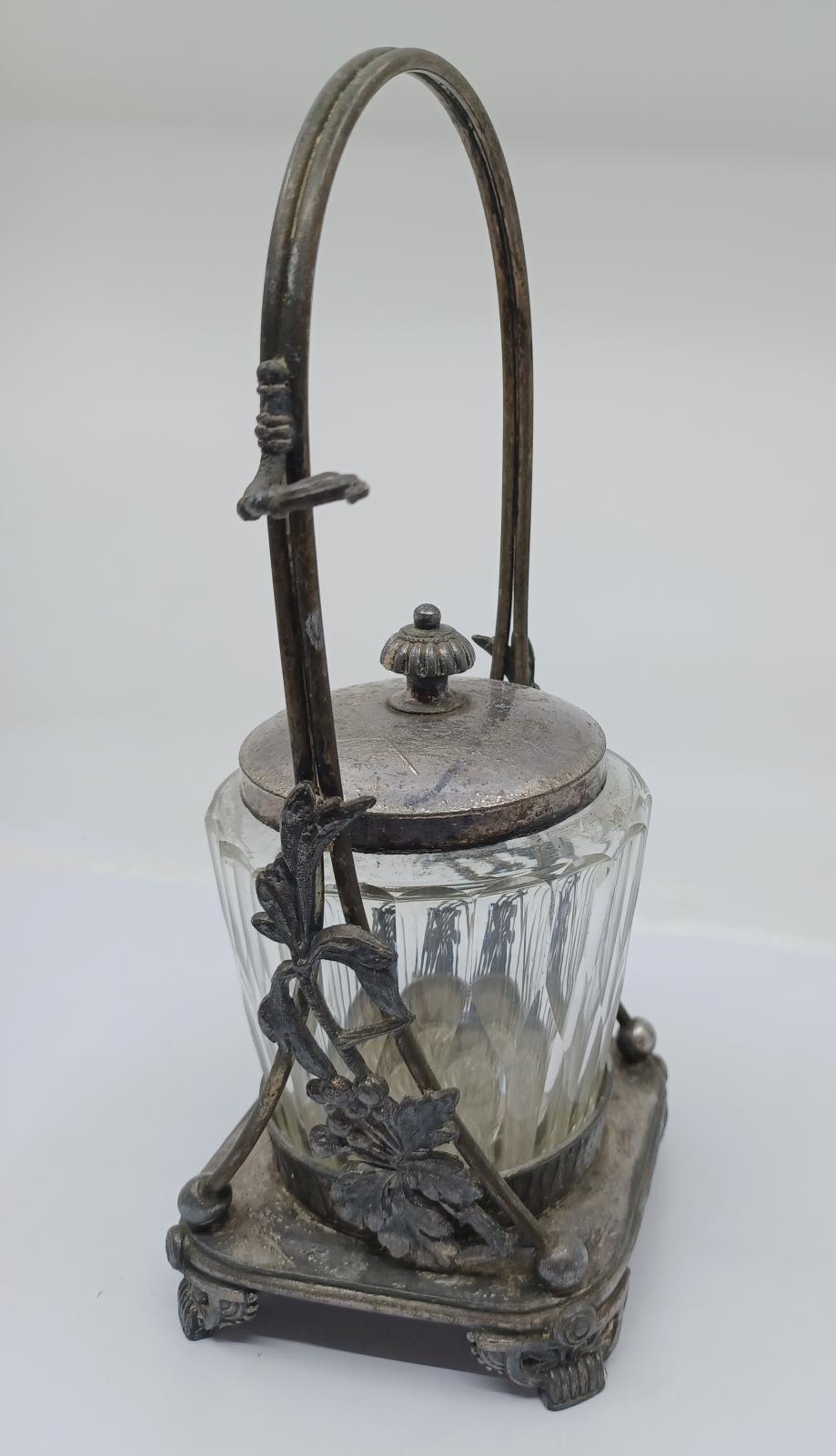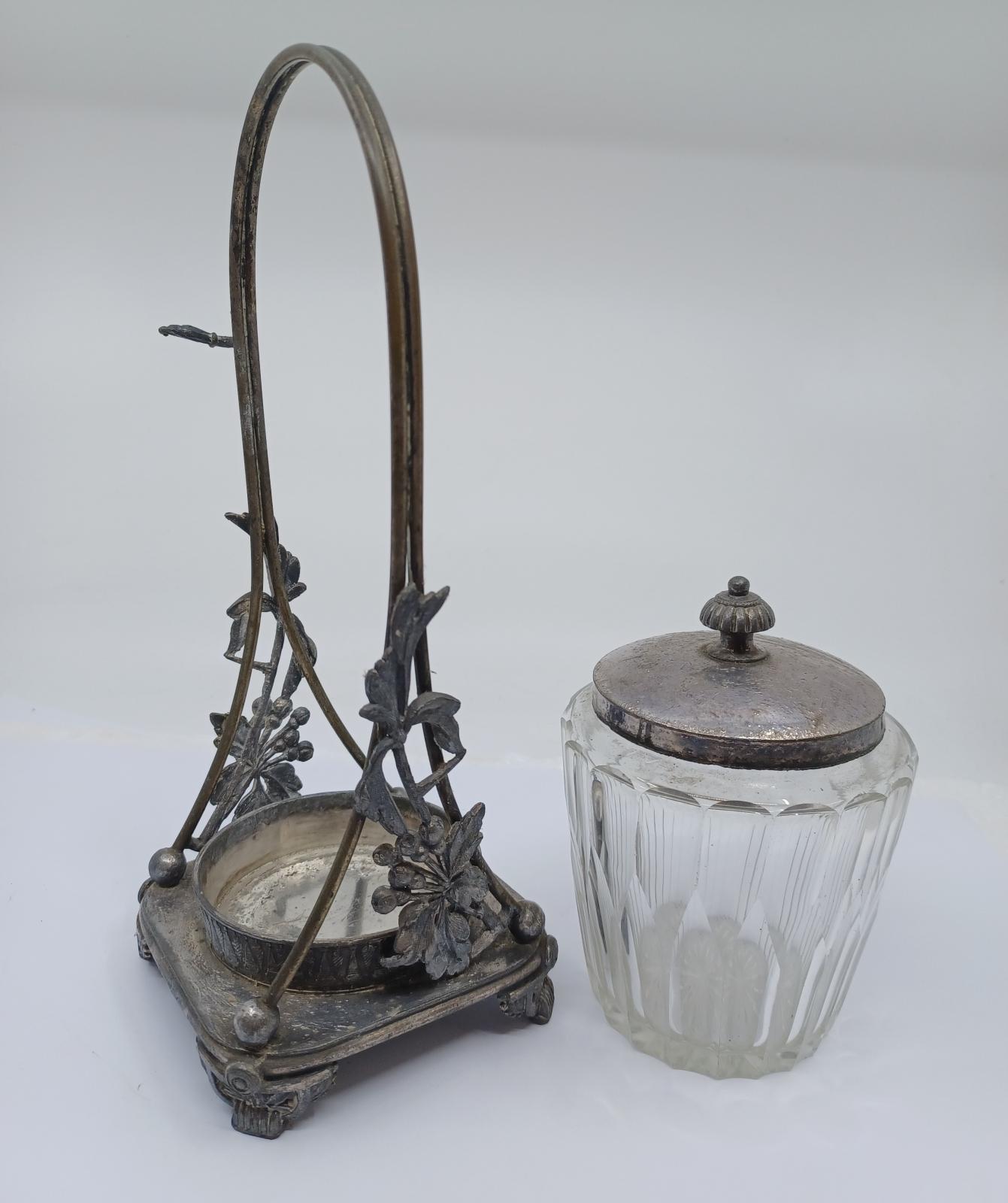Pickle Castor - Meriden
ornate silver-plated metal frame with handle that holds a decorated glass jar and silver-plated lid
Silver-plating is the process by which an object made of base metal is coated in silver. A silver-plated item is one that has received this specialized treatment. There are different intensities of silver-plating, namely single, double, triple, and quadruple-plated. The most popular misbelief about quadruple-plated silver items is that they have been silver-plated four times over. In reality, the "quadruple" aspect indicates the total quantity of silver with which the object has been plated. Specifically, to electroplate 144 teaspoons, the "standard" silverplate process demanded the use of two troy ounces of pure silver. In contrast, that same number of teaspoons, when quadruple-plated, would be coated with eight troy ounces.
Details
Details
Bottom of stand: "Meriden Silver Plated Quadruple #0637"
A pickle castor is a decorative Victorian-era serving dish used to hold pickled fruits and vegetables. It consists of an ornate, silver-plated metal frame that holds a glass jar, and it typically includes a matching silver-plated lid and serving tongs or a fork. These castors were considered a status symbol, popular from about 1860 to 1901.
Other items from Busselton Historical Society
- Coffee Set - Electroplate
- Linen - Tablecloth
- Travel Alarm Clock - Europa
- Old Australian Coins
- Master Bowl - Carnival Glass
- Fountain Pen - Parker
- Pocket Warmer
- WA Motor Driver's Licence - D & M Taylor
- Mens Travel Shaver "Philishave" - Philips
- Book - "The Loving Record"
- Apothecary Weight Set
- Tea Strainer (silver plated)

